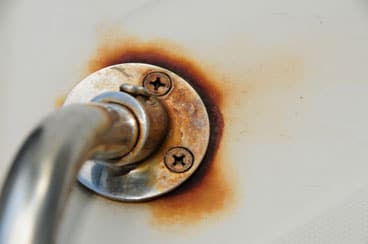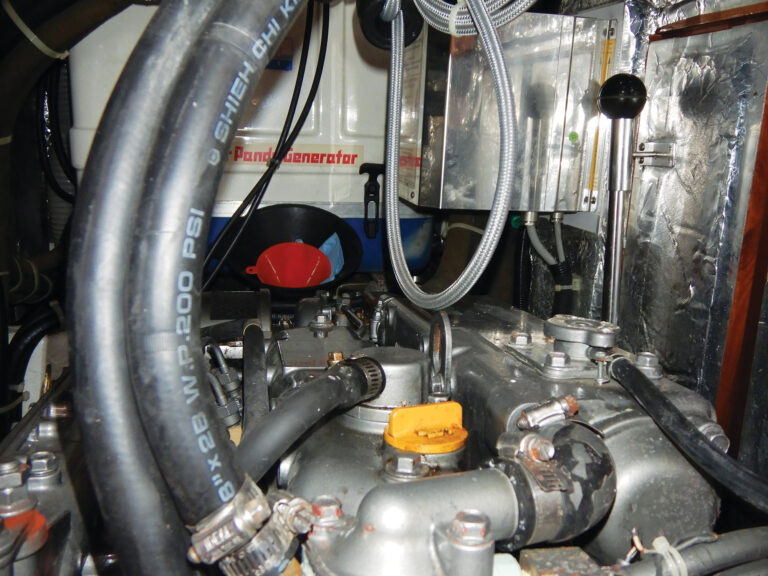
Rust Stain Removal
In many cases, rust stains on a fiberglass hull or deck, while unsightly, are simply ignored or begrudgingly accepted as unavoidable. In some cases, however, that rust can be an omen of problems lurking beneath stainless-steel hardware. Such stains are something you’ll want to investigate and correct—sooner rather than later.
Stainless steel with its thin layer of tough, corrosion-resistant oxide film intact is termed passive; this is its normal condition. Rust stains near stainless steel are often the byproduct of a process known as crevice corrosion; stainless steel so afflicted is said to have become active. (For more on this topic, see “Beware of Stainless-Steel Corrosion,” May 2009.) Active stainless steel is analogous to ordinary mild steel that’s rusting. In both cases, the metal is compromised, although in the case of stainless steel, it’s much more insidious because the flaking and scale associated with conventional steel isn’t present. Thus, whether it’s for cosmetic or structural reasons, halting the advance of crevice corrosion is well worth the effort.
To prevent staining, it’s important to understand the process by which it occurs. In order for stainless steel to remain free of rust, it must be exposed continuously to oxygen for it to replenish and maintain the tough oxide layer that resists corrosion. Stainless steel used on deck is exposed to air, which certainly provides ample oxygen to maintain the oxide layer. Even stainless steel used below the waterline, provided that the water moves freely and regularly past it, may be exposed to enough oxygen to remain passive. If, however, the stainless steel is exposed exclusively to an oxygen-poor environment—stagnant water, for instance—then it’s likely to enter an active state.
Where deck and above-the-waterline hull fittings are concerned, brown staining is usually a result of the use of a low-quality stainless-steel alloy or exposure to stagnant water. In the first condition, short of replacing the hardware, there’s not much that can be done. But a solution exists for the latter condition. If you look closely, you’ll likely see that the discoloration emanates from the perimeter of—that is, from under—the offending hardware. This is because water is trapped beneath the fitting, making the surface there active. This phenomenon affects fasteners and chainplates as well; if the holes in decks, cabins, and hulls through which they pass are filled with stagnant moisture, then they’ll become active.
To correct the problem, remove the stainless steel, clean and dewax it, then carefully rebed it once you’ve cleaned up the fiberglass. Stain removal can be challenging, although there are several products designed to make the job easier. One I’ve used is Attwood Marine’s Rust Stain Remover. Some report that metal polish also effectively removes rust stains from gelcoat; I’ve used Nevr-Dull successfully. Also, or if this doesn’t work, polishing compound can be used on gelcoat, but avoid overdoing it because the process works by removing the surface layer, and gelcoat is already quite thin.
When you’re ready to remount the hardware, rather than applying bedding compound only to the areas where fasteners pass through, coat the entire base of the piece, using a sealant that prevents moisture from migrating beneath it.
In addition to bedding, polishing otherwise rough or irregular stainless steel will minimize surface staining by removing the micro-pits where corrosion gets its start. Avoiding the creation of water traps, such as the recesses produced when undersized fasteners are installed, will also aid in the prevention of crevice corrosion and staining.
Steve D’Antonio offers services for boat owners and buyers through Steve D’Antonio Marine Consulting.








